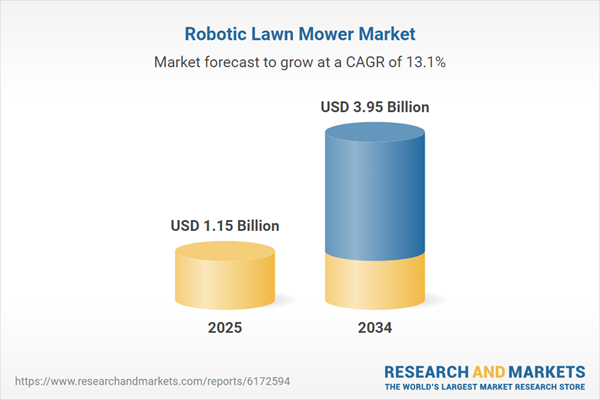Robotic Lawn Mower Market Growth
The global market for robotic lawn mower is being driven by constant technological innovations in the field of automation and robotics. The commonality of smart devices as a result of increasing market penetration of artificial intelligence (AI) and the Internet of things (IoT) to aid in smooth operations is boosting the growth of the market. In addition, the ability of robotic lawn mower to function independently without human intervention, and the facility for remote access is furthering the market growth of robotic lawn mowers.Additionally, with improvements in technology, robotic lawn mowers equipped with silencers that produce minimal to no noise are augmenting the industry growth. Moreover, robotic devices are battery-operated, consume less energy, and adhere to pollution standards; these factors are contributing to the market growth.
Robotic Lawn Mower Market Segmentation
Robotic lawn mowers are referred to the lawn mowers equipped with technology like artificial intelligence (AI) and the Internet of Things (IoT) that allow a centralised control with minimum human intervention and are capable of functioning automatically.On the basis of range, the market can be divided into:
- Low Range
- Medium Range
- High Range
Based on end use, the market can be categorised into:
- Residential Use
- Commercial Use
The market, on the basis of distribution channel, can be categorised into:
- Retail
- Online
The report looks into the regional markets of robotic lawn mower like:
- North America
- Latin America
- Asia-Pacific
- Europe
- Middle East and Africa
Residential Sector to Hold a Significant Share in the Overall Market Growth of Robotic Lawn Mower
The residential sector is expected to be substantially contributing to the overall market growth of robotic lawn mowers. Owing to the fast-paced lifestyle and inflating disposable incomes as a result of industrialisation and urbanisation, automation in consumer electronics is significantly driving the market growth of robotic lawn mowers. In addition, as a result of the rising focus on gardening activities and the positive influence of nature on human health, people are increasingly spending on equipment designed to keep their backyards in good shape, which is increasing the market demand for robotic lawn mowers. Heightened demand for robotic lawn mowers from the residential sector can also be attributed to the long periods of lockdown due to the coronavirus pandemic and the resultant WFH culture, which led many people to explore indoor activities like gardening. Further, centralised control on robotic technology via smartphones is thus providing impetus to the market growth of robotic lawn mower.Key Industry Players in the Global Robotic Lawn Mower Market
The report presents a detailed analysis of the following key players in the global robotic lawn mower market, looking into their capacity, market share, and latest developments like capacity expansions, plant turnabouts and mergers and acquisitions.- Hitachi, Ltd.
- Husqvarna Group
- LG Electronics
- Robert Bosch GmbH
- BOSSMOW
- Others
Table of Contents
Companies Mentioned
The key companies featured in this Robotic Lawn Mower market report include:- Hitachi, Ltd.
- Husqvarna Group
- LG Electronics
- Robert Bosch GmbH
- BOSSMOW
Table Information
| Report Attribute | Details |
|---|---|
| No. of Pages | 157 |
| Published | August 2025 |
| Forecast Period | 2025 - 2034 |
| Estimated Market Value ( USD | $ 1.15 Billion |
| Forecasted Market Value ( USD | $ 3.95 Billion |
| Compound Annual Growth Rate | 13.1% |
| Regions Covered | Global |
| No. of Companies Mentioned | 6 |









